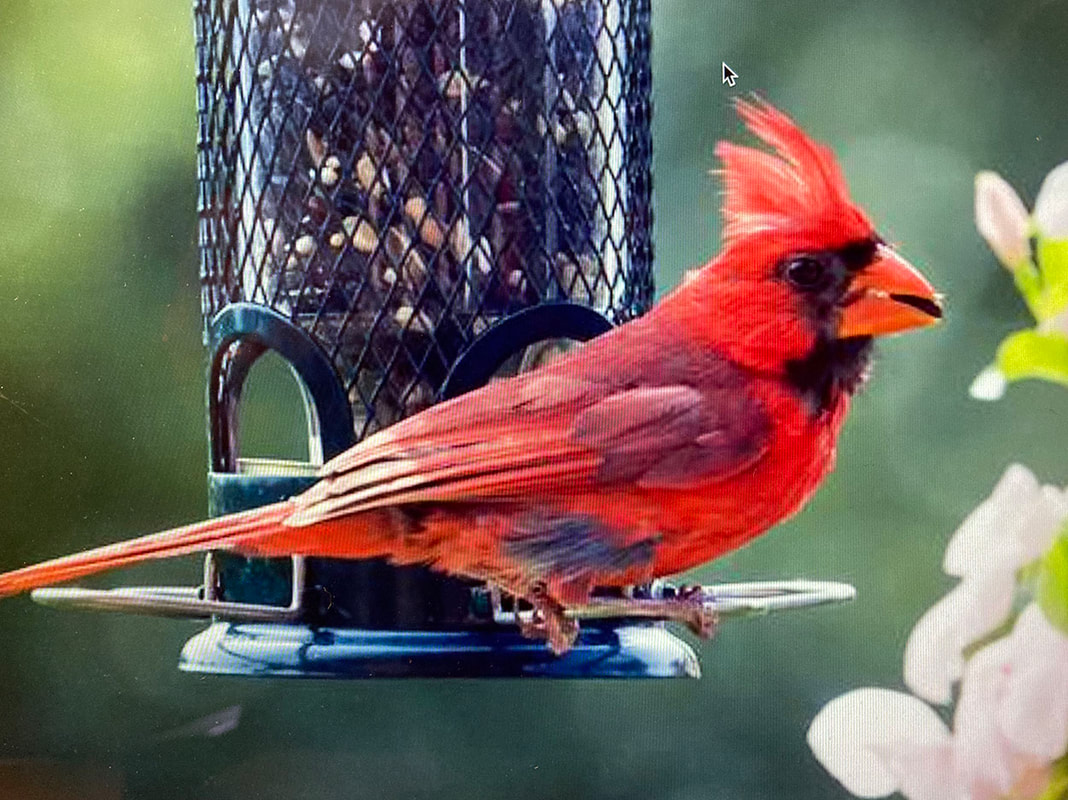Cardinals are Pennsylvania's iconic songbird that come with some interesting native American lore7/15/2023  Without a doubt, cardinals are the most recognizable songbirds you’ll see in backyards, bird feeders, utility wires and they stand out when perched in a tree. And in the mornings their songs, even before daylight, announce their presence. And many cardinals stay around our area all year round since they don’t migrate and will stay in the same general area year-round. There are a multitude of facts about cardinals you may not know. For starters, and according to Bird Feeder Hub, cardinals are monogamous birds that mate for life. Both the female and male will work together during the mating season to build a nest that typically takes about 8-9 days. They’ll build their nests out of twigs, pieces of grass and other plant products. A pair was even taking some of the brown material from our hanging flower pot liners. They took so much that the potting soil started to fall out. Cardinals prefer building their nests in bushes, dense shrubbery or low branches that are normally less than 10 feet off the ground. And they do not use the same nest twice but will build a new nest each year possibly using pieces of old nest material. As they are open nesters and not cavity nesters, they will not use a birdhouse. As for the number of times cardinals have offspring, it’s normally two broods a year, some times three. The female will lay 2-5 eggs each time and the eggs will hatch in approximately 11-13 days. The baby cardinals will grow very fast and are usually out of the nest in just 9-11 days. The babies are on their own in less than four weeks. Once the fledglings leave the nest, the parents will teach them how to fend for themselves and find food. During this period, the male may take charge of the young birds while the female goes off to build a new nest for the next brood of the season. Cardinal diets consist of different type of seeds that include black oil sunflower seeds, safflower seeds as well as cracked corn, peanut hearts and some fruits such as fresh berries. When baby cardinals are born their skin is pink with a grayish scaling. When the fledglings grow their feathers in the fall, they will begin to look brown with some red undertones. But it won’t be until the males reach maturity and molt at around 12 months old, that they gain the beautiful red color. During the mating season, male cardinals can be very territorial when protecting their breeding grounds and their young. While the female incubates the eggs, it’s the male’s duty to protect both the female and the nest from any predators and intruders in the area. And they will do so very fiercely. Some may have heard a cardinal tapping or pecking on a window. Since they’re territorial and see another bird as a threat, their tapping or pecking on a window means it most likely that they see its own reflection and challenges itself. In the wild, the average lifespan of cardinals is only around three years but this isn’t due to old age. There are a number of predators and other things that can end a cardinal’s life. They have been known to live up to 15 years in the wild in some cases, and there is a report of one cardinal living 28 years in captivity. There’s also some lore related to cardinals that you may have heard. It’s been said that if you see a red cardinal in your dreams, it’s seen as a good omen and is usually associated with good fortune. It’s also thought to be good luck and associated with the number 12, which is considered good luck to native Americans. So the next time you see a cardinal, be a big red or a female, you’re being treated to nature’s iconic songbird.
0 Comments
Leave a Reply. |
AuthorNick Hromiak has been an outdoors and automotive writer for over 30 years. He's been published in numerous national and state-wide outdoor magazines and newspapers.
|
Proudly powered by Weebly
 RSS Feed
RSS Feed